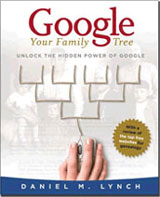|
|
|
|

2000 Census
The 2000 Census will be closed to public inspection until the year 2072. It's hard to imagine how reseachers will be accessing information by that time, but for now — consider the differences in the official U.S. population as recorded in the 1930 vs. 2000 Census.
|
|
|
| |
1930 Census |
2000 Census |
|
| Total U.S. Population |
122.8 million |
281.4 million |
|
| Leading country of birth of foreign born |
Italy (1.8 million) |
Mexico (7.8 million) |
|
| Life expectancy |
59.7 years |
77.1 years |
|
| Median age |
26.5 years |
35.3 years |
|
| Population of California |
5.7 million |
33.9 million |
|
| Number of people age 65+ |
6.6 million |
35.0 million |
|
| Proportion of women in the labor force |
24% |
61% |
|
| Percentage of households consisting of people living alone |
8% |
26% |
|
| Average number of people per household |
4.1% |
2.6% |
|
|
|
 List of 50 U.S. States by Date of Statehood
Source Details: U.S. Census Bureau List of 50 U.S. States by Date of Statehood
Source Details: U.S. Census Bureau
The following official press release was issued by the U.S. Census Public Information Office on Thursday, March 28, 2002 in regards to the upcoming release of the 1930 census. Additional information and full details can be viewed here.
National Archives Opens 1930 Census Records to the Public
In 1930, when life expectancy in the United States was less than
60 years, compared to 77 now, census enumerators gathered information
across America during the dawn of the Great Depression. Those time
capsules of records, collected 72 years ago, will be released by the
National Archives on April 1.
The 1930 census found just 5,165 people residing in a dusty, desert
outpost called Las Vegas, Nev., where the railroad was the principal
industry; and 48,118 in another desert town to the south called Phoenix,
Ariz. Both Western cities today are among the fastest growing in the
nation: Census 2000 tabbed Las Vegas' population at 478,434 and Phoenix at
1,321,045.
Other highlights from the 1930 census include:
- It was the last census that asked U.S. residents if they could read or
write. It also was the last census in which everyone was asked the
same set of questions. In 1940, a scientifically selected sample of
households received a "long form" with a set of questions in addition
to those that were asked of all households.
- In addition to the 1930 Census of Population, enumerators took the
censuses of employment, agriculture, manufactures, mines and quarries
and distribution (wholesale and retail trade).
- Census Day was April 1, 1930, a change from the 1920 date (Jan. 1)
because of weather-related difficulties encountered in data collection.
- Five months after the 1929 stock market crash, California's
population was 5,677,000. Its nation-leading population in 2000 was
33,871,648 nearly six times as many residents.
- According to the 1930 census, 12 million people had access to radios.
A new question, "Does this household have a radio?," was designed to
measure the extent of the nation's leap into new home-appliance
technology.
- In 1930, veterans could indicate service in World War I, the
Spanish-American War, the Civil War, the Philippine Insurrection, the
Boxer Rebellion and the Mexican Expedition.
In order to protect the confidentiality of individual census records,
the Census Bureau and the National Archives withheld the release of these
records to the public until 72 years after the census in which they were
collected [92 Stat. 915, Public Law 95-416; October 5, 1978]. The original
1930 documents were destroyed long ago, but not before their photographic
images were transferred to rolls of microfilm in 1944 and 1945 and kept in
locked vaults at the National Archives.
|
|



